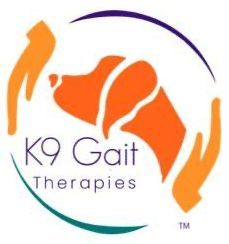Browse through these FAQs to find answers to some commonly raised questions.
Browse through these FAQs to find answers to some commonly raised questions.
Is stroking my dog the same as massage?
Without a doubt, touch is important for humans and dogs alike, promoting a feeling of well-being, as well as developing a strong bond between pet and pet parent.
However, while stroking may bring your dog comfort, it does not address areas that may be carrying tension. A Canine Massage practitioner is trained to locate deep tensions and restrictions that can cause pain and discomfort which would otherwise have gone unnoticed.
Can massage cure my dog?
No it can’t. Where it can offer relief of pain, tensions and stresses that are associated with dysfunction and long-term conditions, massage is not a replacement for veterinary diagnosis and treatment but works alongside it to enhance the well-being and recovery of your dog.
Am I allowed to stay with my dog?
Absolutely! This can be very beneficial for your pet, especially if they are a little nervous or in discomfort. We create a very calm and comforting environment for both pet and owner.
Will massage hurt my dog?
Dogs can experience tight sore muscles just as we do. If they are holding a great deal of tension, they may feel a little unsure and flinch, but you can often see the tension release before your eyes, as soon as we apply soft gentle stokes, which are very relaxing and comforting for your pet.
All massage techniques are applied slowly and gently with care and consideration, allowing your pet to guide us.
How many treatments does my dog need?
This is purely dependent on their condition, physical & mental needs, veterinary recommendation if your pet is receiving any veterinary care and the owner’s requirements.
We generally recommend 3 initial treatments for optimum results over a 3 -5 week period
Regular maintenance sessions can be arranged if your dog is dealing with a chronic long-term condition and/or chronic compensatory issues, requires support with pain management or to keep your active dogs muscles supple and flexible and perform at their peak
for as long as possible.
Where do the treatments take place?
Treatments can be carried out in your own home, as this is more familiar too them, preferably somewhere quiet without any distractions, e.g. other pets, loud noises. Alternatively, we have bases in Leintwardine, if more convenient for you.
Your pet is massaged at their level and wherever is most comfortable for them. This could be lying on a mat, sofa, standing or even on your lap. There have been many occasions when wee ones like the comfort of a cuddle while releasing tight sore muscles.
What qualifications do you have?
Check out the 'About Sarah Darling' page, for a full list of qualifications and training.
What typical locations do you cover?
K9 Gait Massage Therapy operates from Leintwardine. We provide home visits covering areas of Herefordshire, Shropshire & Powys, where a contribution for mileage will be applied which will be arranged at the time of booking.
Typical areas covered are:
Ludlow, Leominster, Leintwardine, Wigmore, Knighton, Pembridge, Presteigne, Stowe, Clun, Stokesay, Adforton, Brierley Hill, Lingen, Shobdon, Eardisland, Monkland, Richards Castle, Broome, Bromfield, Ludford, Aymestry, Leinthall Earls, Craven arms, Acton Scott, Little Stretton, Clinton, Totterton.
There are times when asked to travel further afield, which I am always happy to do if circumstances allow.
What type of dogs do you treat?
All breeds, shapes sizes and conditions. Check out the Canine Merishia Massage page for more information.
What if I have an aggressive dog?
K9 Gait Massage Therapy, does not use any force or restraints. Your dog has choices! Building trust is paramount. In the very unlikely event that your dog should show any reactive/aggressive behavior and only if your dog has been muzzle trained you may be asked to fit an appropriate muzzle in line with the standard health & safety practice when working with domestic animals. This is to ensure the well-being and safeguard of the animal, the owner/s/handler and practitioner. This would be in extreme cases, and something i have not yet come across.
It is also the owners responsibility to inform your practitioner if their dog has ever bitten anyone, has any aggressive tendencies or behavioral issues.
Why do I need veterinary consent?
Your vet is aware of your dogs’ health and history and can therefore inform us of an area/s that may be contraindicated.
By working along side your vet, we can keep them informed of our findings & treatments, ensuring your pet continuously receives optimum care and assistance with their recovery.
A contraindication is a situation where a treatment, drug or surgery should not be carried out at a certain time or requires further veterinary advice. A contraindication can be temporary, permanent or to a specific area. There are certain contraindications where massage may not be appropriate.
Some contraindications to massage include:
• High temperature
• Open wounds
• Epilepsy
• Broken/ fractured bones
• Heat stroke
• Cancer
K9 Gait Massage Therapy, understands the implications to the veterinary act, therefore respects and adheres to them.
The Veterinary Act 1966,(Exemptions) Order 2015 allows for the treatment of animals by physiotherapy, ‘Physiotherapy to include all kinds of manipulative therapy, therefore including Canine Massage Therapy’ provided that the animal has first been seen by a veterinary surgeon who has diagnosed the condition and decided that it should be treated by physiotherapy under his/their direction. Therefore, it is against the law not too!
Working with these guidelines gives you the knowledge that the massage practitioner has been trained to a professional standard, is fully insured and dedicated in providing the upmost consideration, sympathy and care for your animals physical and mental well-being.
K9 Gait Massage Therapy also adheres to the Animal welfare act 2006.
